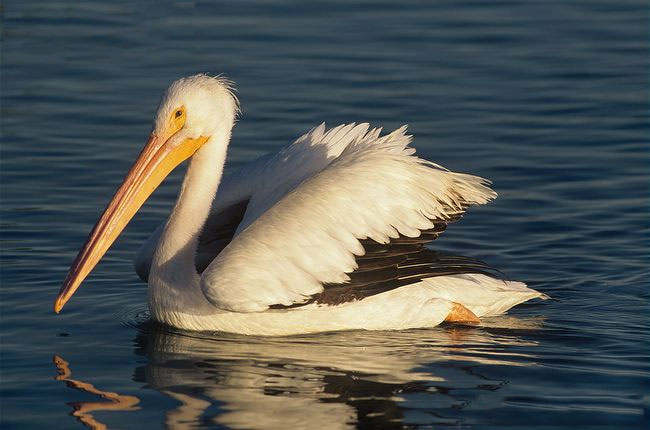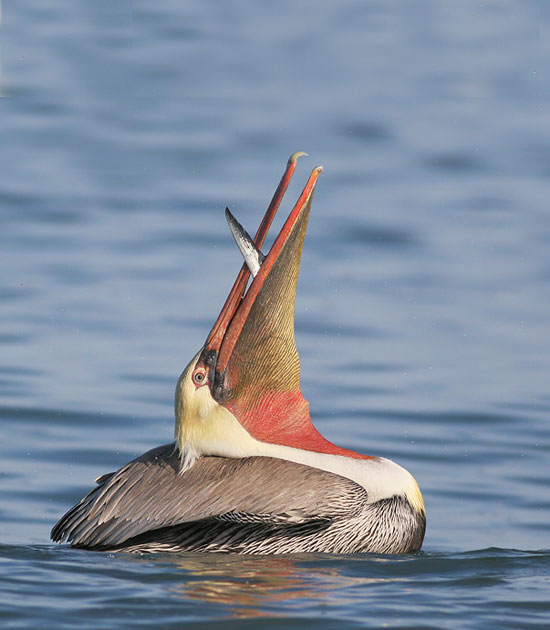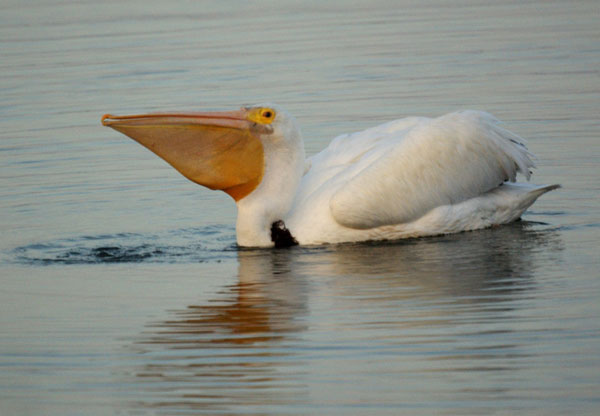With a tall body, pelicans have a wingspan of up to 3 meters and fly up to 3,000 meters above the ocean currents.
Having appeared in a number of Christian myths, with their prominent long beaks, pelicans are one of the familiar images at sea. But not everyone knows interesting facts about this unique bird.
There are currently 8 species of pelicans in the world. Except for Antarctica, they are present on almost every continent, from southern Tasmania to eastern Canada. Most pelicans live in the tropics, around the coast and in rivers and lakes.

Pelicans can eat everything, whether it’s fish, shrimp, crabs, tadpoles or even turtles! When pelicans are exhausted from hunger, they can even drown and swallow a poor seagull! This bird will use its large throat bag to scoop water, then filter the water to get its prey.
Normally, birds often have difficulty catching prey at night. Pelicans are different. They sense underwater creatures very clearly thanks to their long, versatile beak. They often gather to catch prey together.
Pelicans use their wings to kick water to pull fish and shrimp to shore, then use their beaks to scoop them up. Just by cleverly flicking their lower jaw, they can grasp all their prey. Many times, when catching a big fish, this animal also plays the game of throwing the bait up high, grabbing it and swallowing it deliciously.

As one of the largest birds, the weight of the pelican’s bones is truly shocking! The pelican’s skeleton accounts for only 1/10 of its total body weight – which is typically 14kg.
Air pockets in their bones give pelicans their incredible ability to recover. While the air sac is under the throat, the skin under the chest and under the wings helps this animal’s digestive system work very effectively.
In addition to helping reduce body weight and help float on water, air sacs also increase flight force by stretching and continuously stroking the feathers across the abdomen. Thanks to that, pelicans dive into the water to catch fish more easily than other birds.

When pelicans flirt, they open and close their beaks repeatedly to make their throat sacs murmur. They lift their beaks, and expose their bait on it.
Another cool thing about this bird is that both its beak and pouches can change color.
For example, Australian pelicans can change their air sacs to bright pink, their throat color to light yellow, and the rest of their bill to blue.

Different pelican species change distinct colors. But all are very vivid and magically beautiful. Pelicans of both sexes can incubate eggs (usually 1 – 3 eggs) by standing completely on their webbed feet.
There are many interesting things to say about the bird with the giant beak. But within the scope of a small article, perhaps this has partly satisfied the readers’ curiosity.
Fortunately, pelicans are not rare creatures, so as long as you go to the sea, it is not difficult to comfortably watch pelicans spreading their wings.





